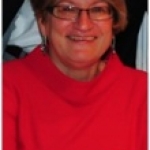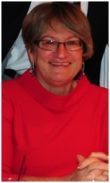
Ms. Rachel Engh
Public Art Engagement Creating Neighborhood Reporters
Posted by May 01, 2012

Ms. Rachel Engh
Last week, I heard local artist Kinji Akagawa’s joyful chuckle as I stood still, swept up in his world while viewing his public art piece, Enjoyment of Nature, in Minneapolis. And he wasn’t even next to me. Instead, I was listening to a recording done by Akagawa for Sound Point, a collaboration by Minnesota Public Radio (MPR) and the City of Minneapolis.
Sound Point is a technologically innovative way for people in Minneapolis to connect with art, artists, and public space. After the (optional) recorded welcome by Mayor R.T. Rybak, the listener/viewer can experience 13 pieces of art, all within a two-mile radius. In these short recordings, artists explain the significance of the pieces’ spatial contexts and what they hope visitors will experience while viewing their work.
I stood, phone to my ear, for a whole three minutes, as I listened to Akagawa talk about his piece. He communicated his wish of creating a gathering place for people, either waiting for the bus or sitting in the sun sipping coffee, and even birds who can visit the bird bath.
One aspect of Akagawa’s built environment is a moonscape, depicting the moon’s movement over a month-long period. Akagawa notes that it honors the people who clean the city at night, many of whom are people of color and immigrants.
Next, I walked to the City’s Public Service Center where I found another Sound Point, Wing Young Huie’s Lake St., USA. A community photography project, it was originally a set of hundreds of black and white photos that was publicly displayed along six miles of Lake Street in Minneapolis. Now, some of them hang on the walls where the city planners pass every day. In his recording, Huie notes the importance of showing his photos in public spaces because they “reflect realities of so many different people.”
Read More












